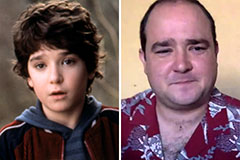Catching impressive photos of the night skies calls for cautious preparation. Examining the weather report for clear skies is essential, as is understanding what time the moon increases and establishes.
Are canvas tents any good?
Begin by adjusting your electronic camera to hands-on capturing mode. Take numerous test shots with numerous ISO, aperture and shutter speed setups to see what works ideal.
Camera
A fundamental DSLR camera with a large lens functions well for night-sky pictures, yet any electronic camera with a large sensing unit and a manual focus setting should function. The vital part is that the camera can be set to fire in RAW format, which enables maximum versatility when editing.
Depending upon the wanted effect, you may intend to take a number of direct exposures and then combine them in post-processing. This can be useful if you're firing both a foreground object (like a lake, tree, lorry or a building) and the evening sky and require to expose each at various settings.
You can likewise experiment with long-exposure shots that reveal star trails. This can be attained by centering your structure on the North Star and using a shutter rate lasting for several minutes. This produces remarkable arcs and vortex-like circles of light around your subject. It can be time consuming, yet the results are magnificent!
Lens
Among the most vital factors in night skies digital photography is picking the right lens. A high resolution, broad angle lens will aid you record as many stars and the moon in your photo as feasible.
You will certainly likewise require a tripod to stop camera shake during long direct exposures. It is additionally advised to shoot in RAW mode, which will give you much more latitude in post-processing.
One more factor is timing. It is best to plan for when the Milky Way will increase or set depending upon your place. There are a number of applications and websites to assist with this consisting of PhotoPills.
Lastly, it is great to have a fascinating foreground in your photo to include deepness and comparison. Using interesting rock formations, buildings or even people can add a sense of scale to your image and make it more impactful. Your composition should also adhere to basic photographic principles, such as the rule of thirds and discovering prominent lines.
Shutter Speed
The shutter is the part of your electronic camera that sits in front of the image sensor and opens up and near videotape a direct exposure. Its speed affects just how much light your picture receives-- the much faster it is, the much less light enters.
A slower shutter rate enables much more light in, yet additionally obscures any kind of activity that happens during the direct exposure, which works for capturing celebrity tracks and various other impacts such as a long exposure to create a gorgeous night skies.
With the ideal devices, it's possible to produce images that are virtually as brilliant as daytime and still be able to catch dazzling information of the Milky Way and stars. For maximum clarity, try to get as away from towns and cities as feasible and inspect sites such as this one for cloud maps and dark skies.
ISO
Picking an ISO setting is an essential action in evening sky digital photography. The greater the ISO value, the more delicate your cam will be to light and the brighter your picture will be. However, if you go too high, the noise in your photo will certainly be as well popular.
A good beginning factor is to set your electronic camera to a reduced ISO of 800, then take an examination posh tents shot. If this image is too dark, boost the ISO one stop at once up until you have an acceptable photo.
Foreground shots in night skies pictures require a lot longer exposure times than the celebrities, so you'll want to make use of a tripod. To even more maintain your cam, use the remote shutter release to stay clear of any drinking triggered by pressing the button on your own. Additionally, remember to maintain your lens in Handbook Focus setting. This will aid you to preserve the very same focal size throughout your shoot. The Rule of Thirds is an essential policy for composing evening sky pictures, aiding to balance and link your images.
How much is a waterproof tent?

 Danny Tamberelli Then & Now!
Danny Tamberelli Then & Now! Alfonso Ribeiro Then & Now!
Alfonso Ribeiro Then & Now! Bradley Pierce Then & Now!
Bradley Pierce Then & Now! Lynda Carter Then & Now!
Lynda Carter Then & Now! Mike Smith Then & Now!
Mike Smith Then & Now!